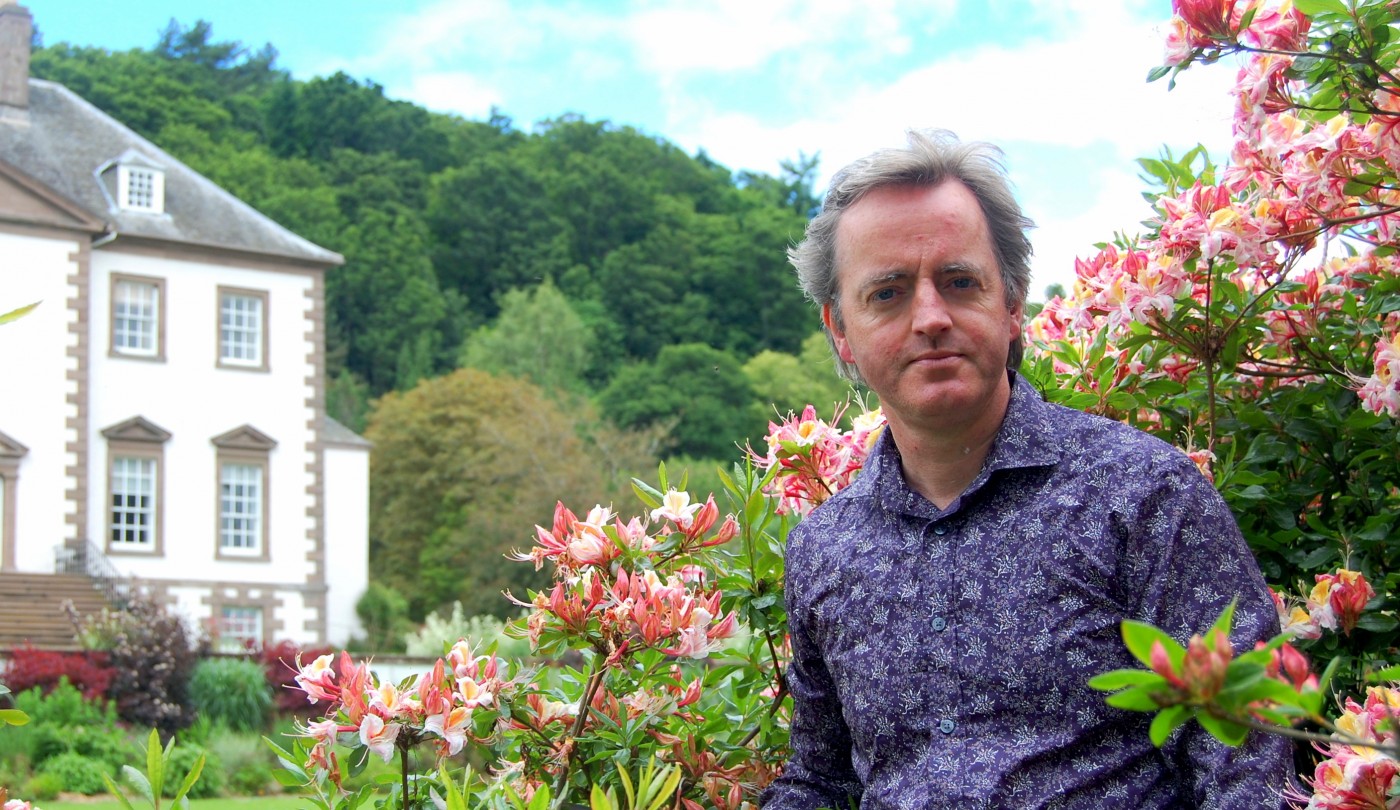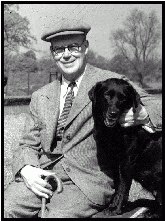

We think that we are the only 3 generation plant hunting dynasty: unless you know different.
Reginald Farrer Euan Cox

The golden age of plant-hunting from around 1850-1950 saw an astonishing number of now common garden plants introduced for the first time from the mountains of Asia, from roses to rhododendrons, magnolias to meconopsis and primulas to pieris. Euan Cox made a single expedition to Burma with Reginald Farrer in 1919 but later became the unofficial historian of Himalayan and Chinese plant hunting in his books and magazines.
Due to political upheaval, from the mid 1950 to the early 1980s, the mountains of China and most of the Himalaya were no longer accessible to plant hunters. George Sherriff and his wife Betty, who had been successful plant-hunters in Bhutan and Tibet in the 30s and 40s, lived near Glendoick at Ascreavie, and soon inspired Peter to go off to the wilds in search of new species himself. In 1960, Peter Cox met Peter Hutchison and the two discovered that they had a mutual interest in plant-hunting. In due course the two Peters mounted an successful expedition to Turkey in 1962 and in 1965, with Patricia Cox they set off for north-east India to an area never before explored botanically, leaving their one-year-old son Kenneth behind with his godmother Averil. Despite the itinerary being severely curtailed due to political upheaval following the Chinese invasion of Arunachal Pradesh in 1962, they managed to discover and introduce several new rhododendron species. These were from fairly low altitudes and have not proven to be very hardy.
The two Peters then set their sights on establishing a garden in western Scotland which would be suitable for growing plants which were too tender for Glendoick. Their search led them to a woodland on the side of west Loch Tarbert and Baravalla was born. The Cox family spent many weekends in the midge and tick infested towering bracken planting the first trees and shrubs in the garden. 30 years on the garden is an impressive sight, only open by special invitation to keen plantsmen and women.
It was not until 1981 that it was once again possible to visit China. Peter Cox was one of the participants in the SBEC expedition to the Cangshan in Yunnan. This was a joint expedition with Chinese and British experts working together. It led to the first availability of large numbers of rhododendrons from wild seed for almost 30 years and the SBEC seed and plants were distributed all over the world. Since then Peter Cox has been to part of China, Tibet and the Himalaya almost every year.
 Kenneth Cox waited a good few years before going to China with Peter Cox for the first time in 1992. From 1993 onwards Kenneth has been leading his own expeditions in search of plants. In 1995 Kenneth lead the first major plant hunting trip to Tibet since the days of Ludlow & Sherriff and in the 10 years which followed Kenneth concentrated his efforts on the little explored region of the Tibet/Arunachal border. Kenneth edited a full colour revision of Frank Kingdon Ward's classic Riddle of the Tsangpo Gorges in 2001. in 2002 Kenneth Cox and explorer Ken Storm managed to obtain permission to explore the lower Tsangpo Gorge and Yang Sang valley in Arunachal Pradesh India. This area had never before been botanised properly and they found several new and interesting rhododendron species. From 2002-2005 Kenneth explored one of the least known and most impenetrable parts of the Himalaya, where most of the mountain ranges are virgin plant-hunting territory. His rhododendron species discovery R. titapuriense was named recently.
Kenneth Cox waited a good few years before going to China with Peter Cox for the first time in 1992. From 1993 onwards Kenneth has been leading his own expeditions in search of plants. In 1995 Kenneth lead the first major plant hunting trip to Tibet since the days of Ludlow & Sherriff and in the 10 years which followed Kenneth concentrated his efforts on the little explored region of the Tibet/Arunachal border. Kenneth edited a full colour revision of Frank Kingdon Ward's classic Riddle of the Tsangpo Gorges in 2001. in 2002 Kenneth Cox and explorer Ken Storm managed to obtain permission to explore the lower Tsangpo Gorge and Yang Sang valley in Arunachal Pradesh India. This area had never before been botanised properly and they found several new and interesting rhododendron species. From 2002-2005 Kenneth explored one of the least known and most impenetrable parts of the Himalaya, where most of the mountain ranges are virgin plant-hunting territory. His rhododendron species discovery R. titapuriense was named recently.
Many new plant species have been introduced by Peter & Kenneth Cox expeditions. Some of the most notable rhododendrons introduced since 1981 include R. dendrocharis, R. ochraceum, R. platypodum, R. denudatum, R. miniatum, R. trilectorum, R. luciferum, R. laudandum, R. monanthum, R. kasoense and R. huianum. Other plants include Gentiana ternifolia, Primula moupinensis, Ilex nothofagifolia and. P. faberi.
Peter Cox: highlights of Plant Hunting Career so far


1990 Malaysia and Indonesia.
1992 Sino Scottish Expedition to N.W. Yunnan (Chungtien, Bei Ma Shan)
1993 N.W. Yunnan, China (leader)
1994 N.W. Yunnan (Weixi), China (leader)
1995 S.E. Tibet, Namche Barwa region (leader)
1996 S.E. Tibet, Tsangpo Gorges, Pemako, Namche Barwa (leader)
1997 S.E. Tibet, Zayul, Pome (leader)
1998 Tsari, S.E. Tibet. (leader)
1999 Tsari S.E. Tibet (leader)
2001 Arunachal Pradesh, upper Siang.
2002 Arunachal Pradesh, Subansiri-Siyom divide (leader)
2003 Arunachal Pradesh: Dibang & Tawang/Kameng
2005 Arunachal Pradesh Upper Siang, Riutala pass & kora
2012 S Sichuan, Muli China (leader)
2013 Northern Vietnam
2015 Sri Lanka
Kenneth Cox highlights of plant-hunting career so far
Cox Plant-Hunting Expeditions
Euan Cox With Reginald Farrer
1919 Burma
Peter Cox, mostly with Peter Hutchison, sometimes with Patricia Cox, Kenneth Cox

1962 N.E. Turkey
1965 Arunachal Pradesh (N.E.F.A.), India. Discovered 3 new species of rhododendron and introduced several other new plants
1981 Sino British Expedition to China- N.E. Yunnan 1981 with Roy Lancaster, etc
1985 Nepal
1986 Yunnan, (Lijiang) Sichuan, China.
1988 Bhutan
1989 China, (Sichuan)
1990 China (Sichuan U.K.-U.S.A. trip)
1992 Sino Scottish Expedition to N.Yunnan (Chungtien, Bei Ma Shan)
1993 Yunnan China, Salween-Mekong divide
1994 Salween Mekong divide (Spring), Yunnan
1995 S.C. Sichuan and N.E. & S.E. Yunnan.
1996 S.E. Tibet, Tsangpo Gorges, Pemako, Namche Barwa (with Kenneth Cox)
1996 S. Chile with Patricia Cox
1997 Salween, Yunnan, China
1998 Tsari, S.E. Tibet. (With Kenneth Cox)
1999 Sichuan & Guizhou, China
2000 Salween, Yunnan, China
2002 Arunachal Pradesh (with Kenneth Cox)
2004 Arunachal Pradesh Tawang area (with Patricia Cox)
2006 Arunachal Pradesh
2006 Chile
2007 Sichuan, China
2009 Guizhou, Guanxi, China (6SM)
2012 China: Sichuan CDHM
2008 Armenia
2010 Guizhou, Guanxi, China2011 Georgia
2012 Sichuan, China